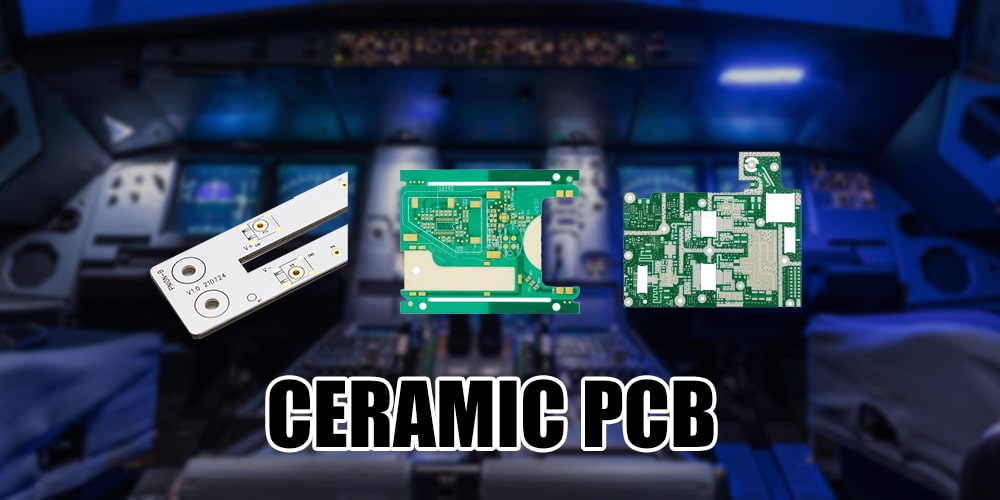Ceramic PCB: Characteristics and Applications
21 January 2025
Views: 1621
As we all know that the traditional PCB is commonly used FR4 material, while the main body of the ceramic PCB is the use of ceramic substrates rather than FR4 such traditional substrates, this article we come to a detailed understanding of the ceramic PCB.

What is ceramic PCB?
Ceramic PCBs are made from a variety of ceramic materials, including aluminum oxide, zirconium oxide and beryllium oxide. These materials have high thermal conductivity (150 to 180 W/m-K), low thermal expansion and electrical properties. Ceramic PCBs are made from a combination of a ceramic substrate and conductive ink. Unlike ordinary PCBs that use adhesives to bond the copper foil to the substrate, ceramic PCBs are put together by bonding the copper foil to the ceramic substrate in a high temperature environment, which provides a stronger bonding force, does not allow the copper foil to come off easily, is highly reliable, and provides more stable performance in environments with high temperatures and high humidity.
Structure of Ceramic PCB
Ceramic PCBs are manufactured using ceramic materials and thin-film technology. The base material is aluminum oxide (Al2O3) or aluminum nitride (AlN). Thin layers of conductive material are deposited onto the substrate using electroplating techniques. The circuitry is then patterned using photolithography and etching processes. Finally, a ceramic overlay is applied to protect the circuitry.

Why use ceramic PCB?
Traditional PCB are usually made of copper foil bonded to a substrate, which is mostly made of materials such as fiberglass (FR-4), phenolic resin (FR-3), etc., and the adhesive is usually phenolic, epoxy, etc. In the PCB processing process due to thermal stress, chemical factors, improper production process, or in the design process due to the asymmetry of the two sides of the copper laying, it is easy to lead to different degrees of PCB board warping. The thermal performance, current-carrying capacity, insulation, and coefficient of thermal expansion of ceramic PCBs are superior to those of ordinary glass fiber PCBs, making them ideal for demanding environments, automotive engine control, industrial control, high-power semiconductors, and down-hole drilling. They can also be used in the aerospace, nuclear, and space sectors for ultra-stable operation in the -65°C to +500°C range.
Conclusion
Ceramic PCB have different advantages over traditional PCBs and are better suited to operate in more demanding environments. By using a combination of various types of boards to achieve the best results, the electronics industry will get better and better.
Share This Story, Choose Your Platform!
















